2019.03.29Field Report
Being a Part of the "AKARI" Bringing Light to People Project, Report by Volunteer Employee Reporters
2015.04.15 Field Report
Panasonic donated solar lanterns wrapped in "animal" shades designed by people around the world to the people of Sone, a village in West Timor, Indonesia. At the lighting ceremony with the villagers, a spectacular "Lantern'zoo" appeared in the darkness to brighten the night.
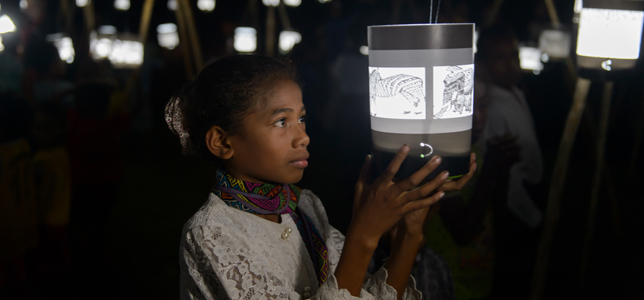
This is Hisao Tsugita of the "Cut Out the Darkness" project.
In February 2015, Panasonic donated 1,010 solar lanterns to people living in off-grid areas of Indonesia. The recipients were two NPOs: "IBEKA", a group that offers community support by promoting renewable energy, and "Kopernik", which delivers innovative technology and products to people in developing countries. In addition to our March 2014 donations to Sumba Island and Cebu Island and a January 2015 donation from Gamba Osaka, which is sponsored by Panasonic, the total number of solar lanterns donated to Indonesia now exceeds 2,000.
Kopernik, a first-time recipient, takes products such as biomass-powered cooking stoves and simple water purifiers that help solve issues in developing countries and delivers them through donations and sales as a way of supporting a better quality of life and economic independence among those in true need.
Of the 1,010 donated lanterns, 110 with shades bearing animal designs selected by vote were donated through Kopernik to the people of Sone Village in West Timor. In carrying out the mission, one of the biggest topics of discussion was how we can ensure that the good wishes of those involved in the project could be conveyed to the local people. We discussed this matter with a Kopernik's local partner, and the result was the "Lantern'zoo" created together with the villagers.
We headed to the village for preprations on the day before the donation ceremony. The mountain village of Sone can be reached about one hour by car from the town of Kefamenanu in central West Timor. We climbed up the bumpy road while admiring the corn fields and from a viewpoint, we saw a peaceful and naturally rich scene before our eyes.
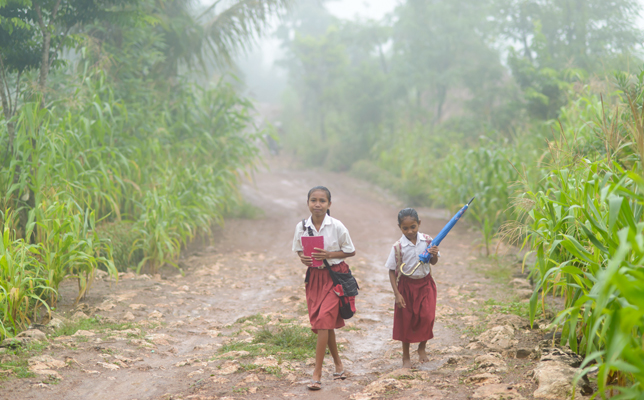
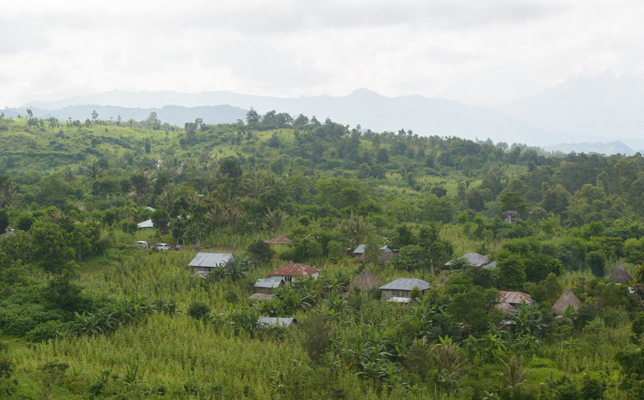
The lovely village of Sone in its natural setting, one hour from Kefamenanu.
Once inside the village, we heard the sounds of weaving machines. This area is known for woven fabrics made through traditional methods. However, because there is no electrical supply in the village, the women cannot work at night. Many homes use kerosene lamps for light, which puts them at constant risk of fire and health hazards due to smoke.
At the lighting ceremony, all of the villagers helped with preparations by cutting trees and vines (to be used as ropes) for hanging the solar lanterns. We felt the people's excitement and anticipation for the ceremony, which, in turn, helped us renew our desire to make it a success. The only concern was the weather. It was the rainy season, so we never knew when it would start raining. We finished preparations for the next day's ceremony, hoping the entire time for sun.
Our hopes were answered. The next day was a beautiful day, without a single cloud in the sky. We loaded the solar lanterns into the cars and when we arrived slightly ahead of schedule, villagers in beautiful traditional costumes came to welcome us. They had planned a traditional ceremony to welcome us. Of course, we were delighted by the unexpected gift.
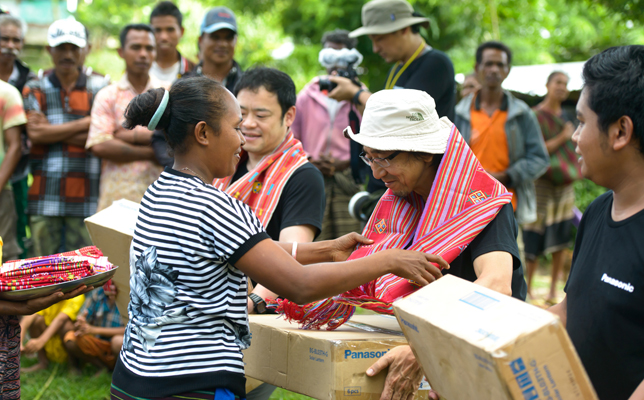
Each member was presented a beautifully embroidered cloth.
Next it was our turn to make the villagers happy. At the donation ceremony, with feeling, we handed each person a solar lantern and shade. The children excitedly showed each other their shade designs. Once all of the solar lanterns were handed out, we carefully explained how to use them, and then the villagers attached their designed shades.
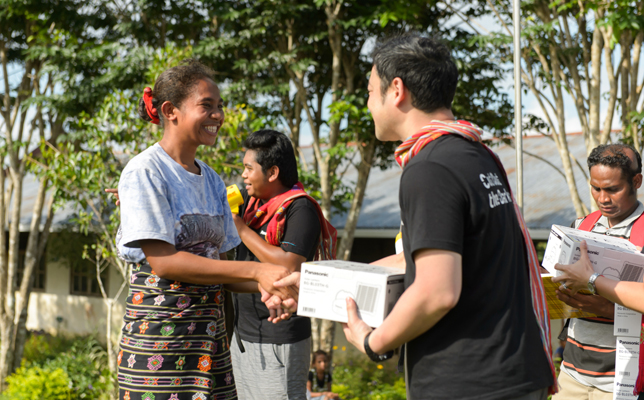
Donation ceremony at a school in Sone Village. A solar lantern was handed to each person.
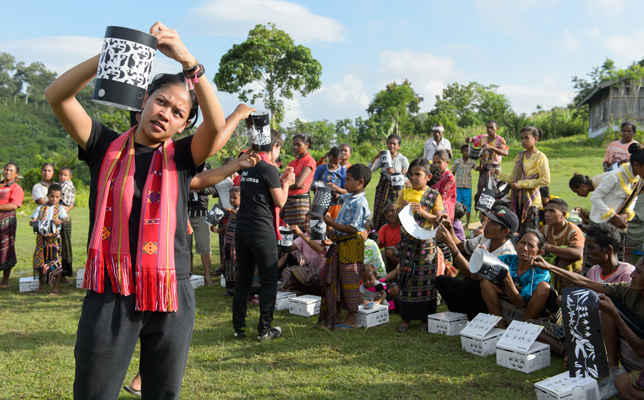
Kopernik staff explaining how to attach the shade onto the lantern.
Once the orientation was finished, everyone started preparing for the evening's lighting ceremony. The villagers expertly assembled the wooden poles and vines to create a structure to hang the lanterns. The solar lanterns with shades were then suspended from the structure, and the set-up was complete. Everyone enjoyed preparing for the special event and everything was ready by sunset. All we had to do was wait for darkness to fall.
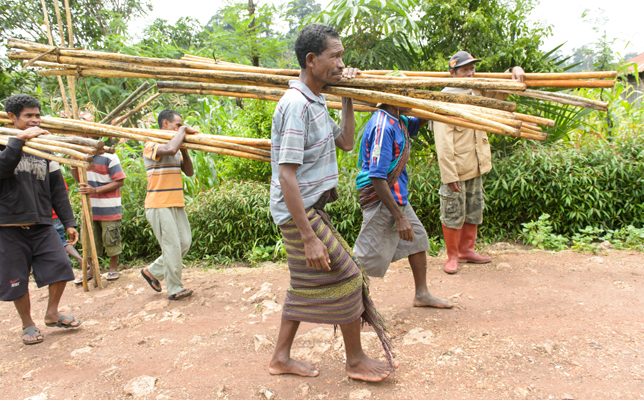
Men of Sone Village carrying wooden poles cut for the lighting ceremony.
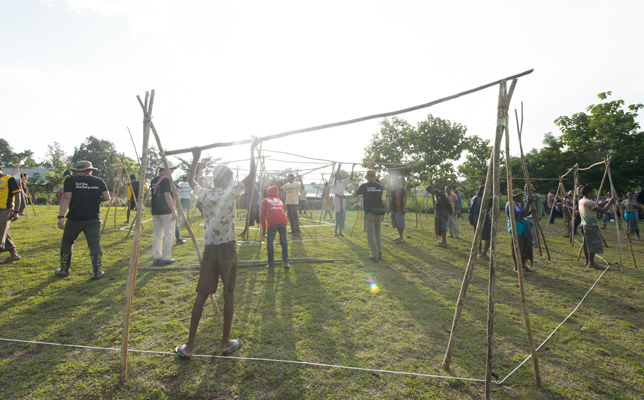
Setting up solar lanterns on display poles together with villagers.
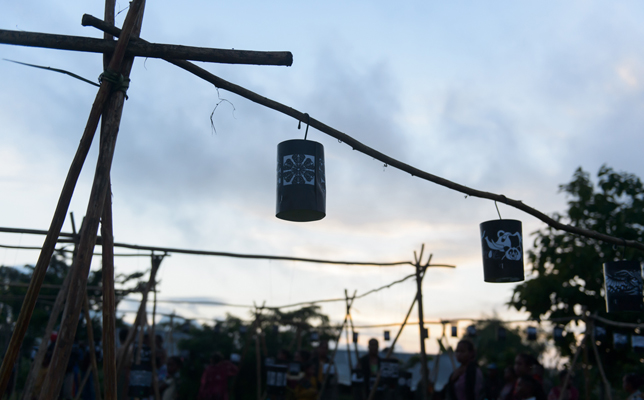
Solar lanterns ready to be lit.
The long awaited lighting ceremony started at 7 p.m. when the sky started getting dark, accompanied with a cool nice breeze. How would the villagers react? Our hearts were pounding.
"3...2...1...go!"
When the staff gave the signal, the 110 solar lanterns lit up all at once and a "Lantern'zoo" appeared before everyone's eyes, with rabbits, bears, giraffes, birds, and other animals. The villagers let out a loud cheer and some children jumped with excitement, while others just gazed, captivated by the bright animals.
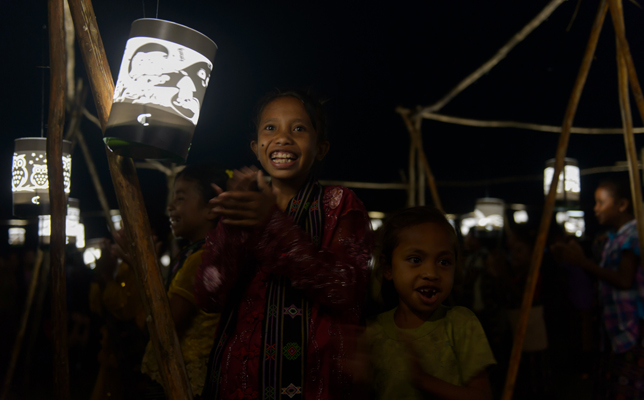
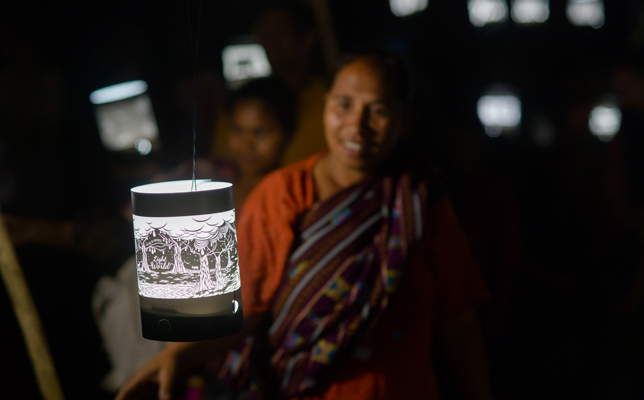
Children and women of the village looking at the animals lit by the lantern's light.
The day's events can also be seen on video.
The lighting ceremony was a huge success. By creating the lighting ceremony together with the villagers, we were able to feel a sense of unity. We hope that the designs in this project will open up a new world for the children in the village as well. Jhon Gideon Adu, a local coordinator for Kopernik sent us an encouraging comment saying, "Thanks to the light of the solar lanterns, the people of Sone village can now work more effectively, families can get together at night, and children can study. We are very grateful for your support."
The new solar lanterns in their homes are very helpful during meal preparation, weaving, and children's studies.
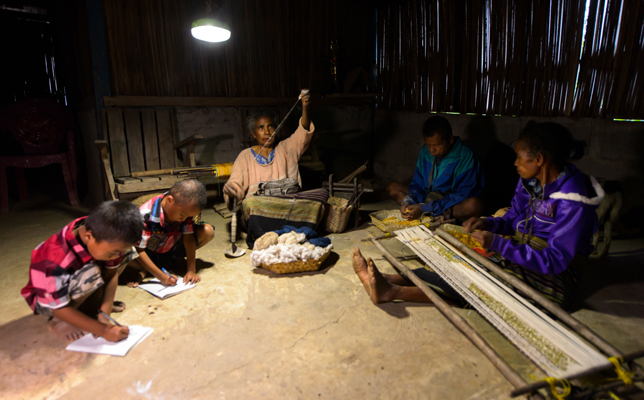
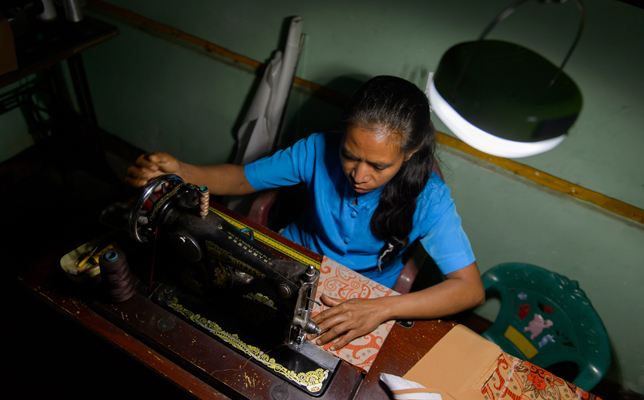
We received many positive comments, like these: "Work at night is so much more productive, thanks to the solar lanterns." "Now the children can study more." And "We now have more time to spend with our families."
|
|